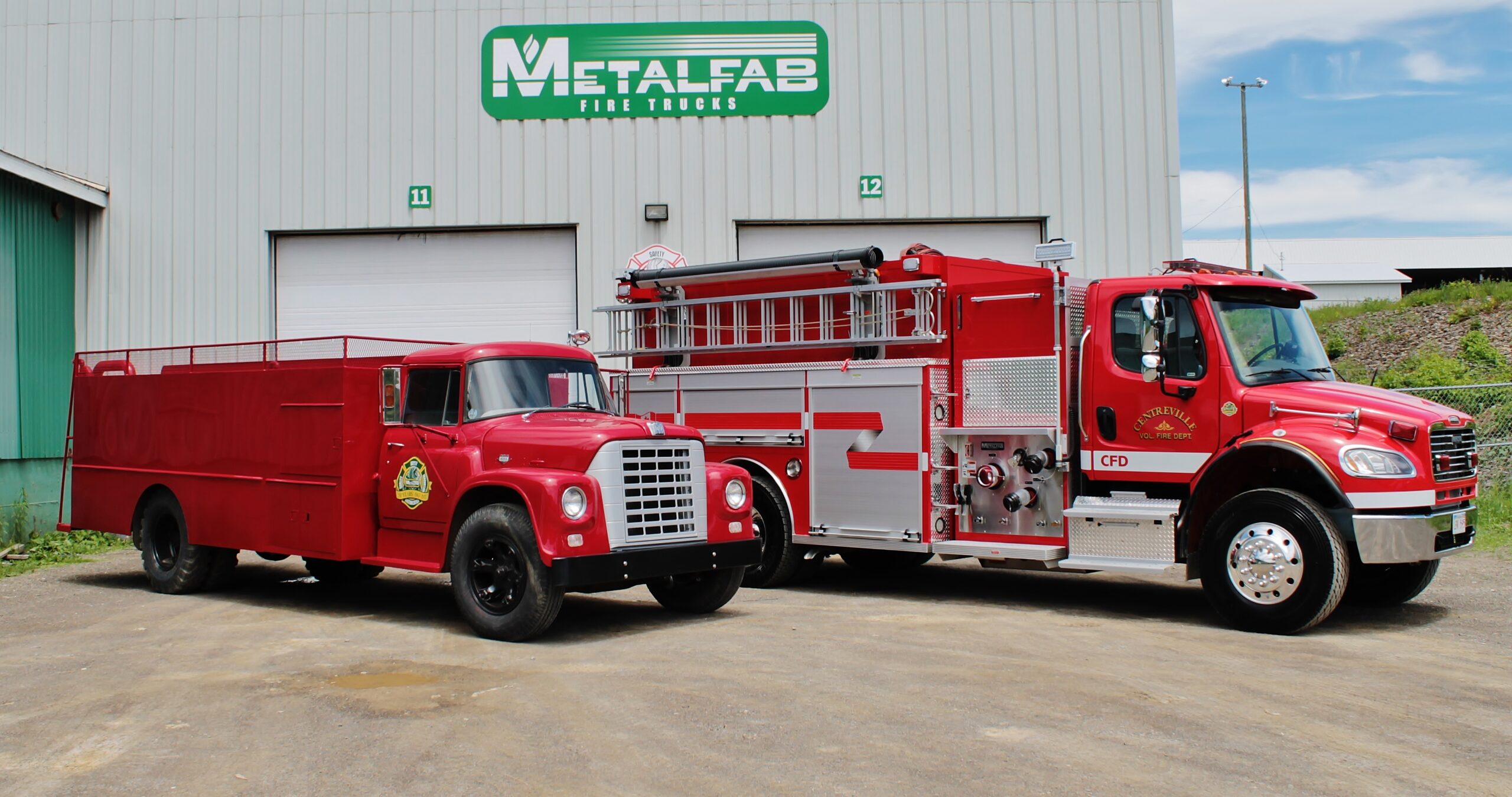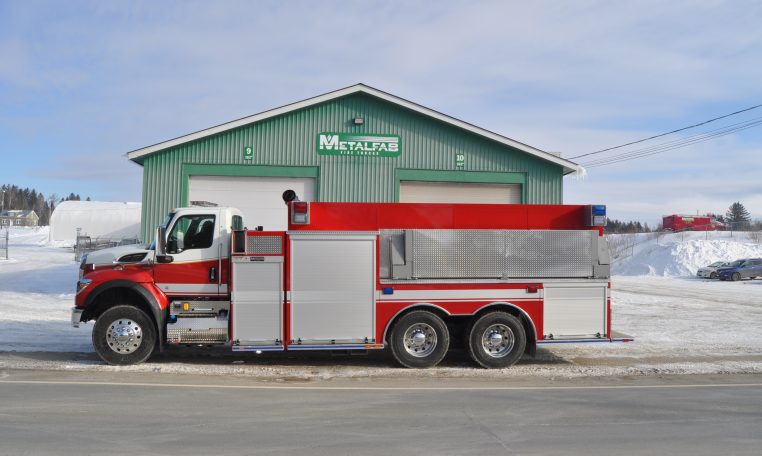

At what point should a fire truck go from a single axle to a tandem axle? It can be difficult to know. There are many factors to consider and mixed interpretations of axle ratings depending on who you ask. Because of this, axles have long presented a challenge for manufacturers. Thankfully, the experienced team at Metalfab has seen it all, and we’re here to make sure you choose the axle that’s right for your next custom fire truck.
While weight remains the dominant deciding factor, it’s also important to consider local road restrictions, turning radius, and compartment capacity before making a final call in regard to which axle is a good fit for your emergency vehicle. Correct interpretations of axle ratings will vary by your provincial or state regulations, so we always assess these on a case-by-case basis.
There’s currently an industry trend toward maximizing the load on single rear axles, particularly on tankers and some recently introduced aerial apparatus. However, a tandem axle is almost always more appropriate when your fire truck will be carrying a substantial amount of weight. Tanker trucks, specifically, often require a tandem axle because they have larger tanks that put more weight on the rear of the vehicle. In the case of pumpers, you’ll likely be okay with a single axle.
Your department’s equipment, pumps, body, and chassis also need to be factored into the total weight threshold for the axle. Larger equipment, pumps, bodies, and chassis may require an upgrade to a tandem model. As a rule of thumb, single axles can handle a two-door chassis, 1,250-imperial-gallon tank, and standard equipment. Tandem axles are becoming more commonplace for multipurpose apparatus with large booster tanks.
The design of your apparatus plays into the equation as well because this will determine how the weight is distributed over the axle, whether it’s single or tandem. If you are determined to go with a single axle, be sure to have your manufacturer design the truck so that the weight is distributed as evenly as possible. If the majority of the weight is centered on the rear wheels instead of partially distributed toward the front, installing a tandem axle may be unavoidable in your situation.
Before making your final decision, there are a few more things to consider. Going with a tandem axle will reduce the amount of compartment space you have available for storage on the fire truck. In many cases, this will be the least of your worries, but it is important to think about if you have a lot of equipment to carry and particularly when your service radius is large. If you have no choice but to go tandem, you might consider revamping one of your other units to take on the lost capacity. You can also work with the fire truck manufacturer to determine options to maximize the available compartment space on the truck.
If you know that you will be making a lot of tight turns in your new fire truck, it may be best to go with a single axle. Tandem axles require a greater turning radius than singles and may cause rear tire “scrubbing” when making tight 90-degree turns.
You need to check your local road or bridge restrictions to see if there are any weight limits set for your area. Too many times we’ve seen departments fail to do this and end up facing issues when operating the vehicle off the main roads. If you need to access a lot of narrow back roads, your local administration may require that you go with a tandem axle or that you carry less water on a single axle, so be sure to check this first. Note that requirements set out by your local government will always override manufacturer recommendations because they know your specific service area best.
You’ll also need to pay attention to either provincial or state regulations for axle ratings, depending on if you’re located in Canada or the United States. Your provincial or state government will likely have an administration that generates rules and regulations governing the design and operation of emergency vehicles and apparatus. Be sure to familiarize yourself with your obligations under these guidelines and the governing body’s preferred axle designs before finalizing the axle choice for your fire truck. If you have concerns about the implications of provincial or state regulations for your build, we welcome you to come to one of our resident experts for advice.
Fire chiefs rely on us to provide advice, expertise, and apparatus integrity when installing axles in their custom fire trucks. At Metalfab, you’re guaranteed an NFPA-Certified vehicle with an axle that works for your crew and your unit design. All the while, we’ll keep the focus on options that optimize vehicle safety performance for your department.
As always, if you have any questions, please don’t hesitate to get in touch with us at 1-800-561-0012 or email our Business Development Manager, Ryan Stacey, at rastacey@metalfabfiretrucks.com.
SEO:
Header: Choosing between a Single or Tandem Axle for Your Fire Truck
Meta: At what point should a fire truck go from a single axle to a tandem axle? It can be difficult to know.
